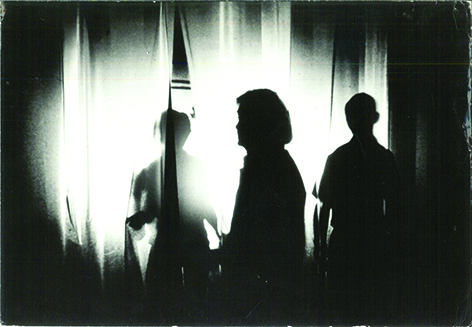Benjamin O. Murphy
Second-Order Images: Reflexive Strategies in Early Latin American Video Art

Lea Lublin, Cultura: Dentro/fuera del museo, 1971, installation photograph. Courtesy of the Institute for Studies on Latin American Art
My research at the Center has focused on my current book project, which investigates the emergence of video as an artistic medium in Latin America during the 1970s. Considering a wide range of artists and institutions based in the Southern Cone, Brazil, Colombia, Mexico, and Venezuela, as well as Latin American artists living in exile in Europe and the United States, the project examines how these diverse actors used the novel recording technology to respond to the oppressive military dictatorships that ruled across much of the region during this period. I contextualize these artistic experiments within the cultures of commercial television that had begun to rapidly expand in Latin America at this same moment, exploring how artists both mimed and subverted television’s broadcast infrastructure so as to build networks of political solidarity across the region. Focusing on the work of artists such as Brazilian Sonia Andrade (b. 1935), Chilean Juan Downey (1940–1993), Argentine Lea Lublin (1929–1999), and Colombian Jonier Marín (b. 1946), my research shows how these figures often coupled such interventions into television’s broadcast procedures with forays into the social sciences and their attendant research methods, employing video technology to conduct sociological surveys, ethnographic fieldwork, and other forms of social documentation and data collection. I place these experiments in dialogue with contemporaneous developments in Latin American sociology, anthropology, communication studies, and political science. In so doing, I demonstrate how video art contributed critically to key discourses animating Latin American intellectual history during the 1970s.
Through this interdisciplinary focus, my book enriches our understanding of the relationship between art and politics during the era of Latin American authoritarianism. Video, I argue, not only furnished artists with strategies for expressing and acting upon these political circumstances, but also served as a platform for reflexive questions about how politics could be represented, and about whether such representational practices might in turn perform political functions of their own. Early Latin American video art was thus aligned with a growing postwar movement across the social sciences toward a paradigm of second-order observation, a position from which those sciences had begun to take their own instruments, postulates, and histories as primary objects of their own analyses. Bringing this reflexivity to bear upon the concept of Latin America itself, the artists I study offered a critical view of how that geopolitical category was constructed by the sciences that purported to observe it. Furthermore, they suggested how that category could be reconfigured for purposes of political solidarity through subversive strategies of disseminating and circulating screen images. The book thus denaturalizes the concept of Latin American art as a given disciplinary subfield, focusing instead on how artistic practice served as a key arena within which the idea of Latin America itself was constructed, scrutinized, and contested.
In addition to my book manuscript, I have also dedicated my time at the Center to advancing a related research project that focuses on the Argentine artist Lea Lublin and a site-specific installation she carried out in Santiago, Chile, in 1971, Cultura: Dentro/fuera del museo (Culture: Inside/Outside the Museum). Created during Chile’s brief experiment in democratic socialism under the presidency of Salvador Allende (1970–1973), Lublin’s work deployed various media formats including video, film, and slide projection in an effort to bridge what the artist saw as an “abyss” separating the hallowed spaces of high culture enclosed within the museum from the spaces of collective social and political life that lay outside its walls. The artist oriented her use of these diverse media around a series of collaborations she pursued with intellectuals and academics hailing from a broad range of scholarly disciplines, including physics, mathematics, philosophy, and sociology. My interpretation of Lublin’s project focuses on these unique collaborations, exploring how they effectively placed artistic practice within an expanded field of interdisciplinary research. I am now currently at work on a series of publications that will explore how this interdisciplinary reframing of art enables us to rethink orienting disciplinary categories of contemporary art history such as conceptual art and institutional critique. Together with these historiographical revisions, I argue, Lublin’s 1971 installation offers a timely geopolitical historicization of the efforts toward inclusion that frame our global museum culture today.
Case Western Reserve University
A. W. Mellon Postdoctoral Fellow, 2022–2024
Following completion of his fellowship, Murphy will begin a new position as assistant professor of global contemporary art history at Case Western Reserve University in fall 2024.
